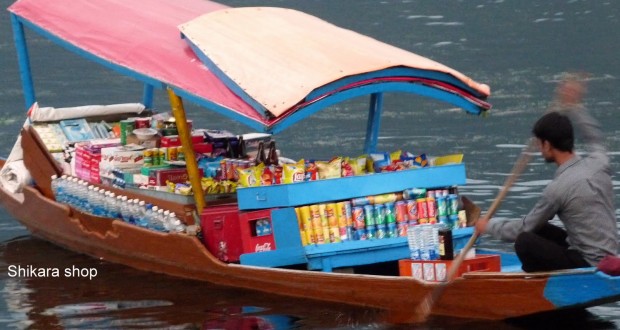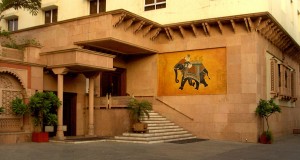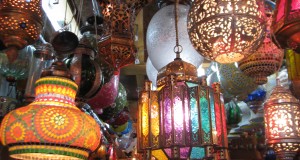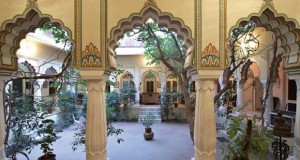Review Overview
Srinagar sells Kashmir’s finest traditional produce: light Pashmina and Shahtoosh shawls, hand-knotted carpets, chain-stitch rugs, walnut-wood carvings, jewelle y and gems, papier mache and rare red saffron. Also leather and furs, coarse-knitted woollen sweaters, and tailor-made clothing. Kashmir has an old fur trade but many of the items offered and sold are illegal both in India and elsewhere in the world . Despite what you might be told, the trade in most wild animal furs is banned by international treaty.
Buying anything in Kashmir is always an experience, generally involving a preparatory cup of spiced Kashmiri tea, a lot of inconsequential banter, then a sudden, remorseless sales attack which has you pinned to your seat. The Kashmir s love bargaining, and have a real zest for communicating their love of their handicrafts to tourists. This often results in you buying a lot more stuff than original planned. The general rule is either to be sure of exactly what you want, and the barter hard for it, or not to buy anything at all until you’ve got a fix on prices at a reliable government emporium. Kashmir Government Arts Emporium, Residency Rd, is a good one—especially fo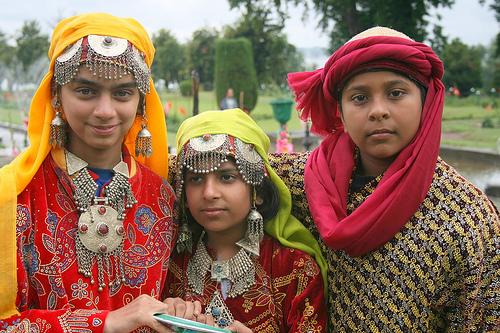 r walnut-wood furniture, papier MaChe items, chainstitch materials, and carpets. It’s open 10 am to 5 pm daily. The Government Centrals Market, across Badshah Bridge, stocks a wide variety of Kashmiri handicrafts an I you can bargain yourself some very good deals. It’s open 9 am to 9 pm, except Sundays. Also worth a visit is the Cottage Industries Village, some way out of tow (cycle there, or get a taxi). This is where most of the local crafts of the area are produced, mainly papier Bache, silk and carpets. When you visit the large showroom upstairs, make sure you do so alone. Anyone who accompanies you gets a heft, commission on all your purchases.
r walnut-wood furniture, papier MaChe items, chainstitch materials, and carpets. It’s open 10 am to 5 pm daily. The Government Centrals Market, across Badshah Bridge, stocks a wide variety of Kashmiri handicrafts an I you can bargain yourself some very good deals. It’s open 9 am to 9 pm, except Sundays. Also worth a visit is the Cottage Industries Village, some way out of tow (cycle there, or get a taxi). This is where most of the local crafts of the area are produced, mainly papier Bache, silk and carpets. When you visit the large showroom upstairs, make sure you do so alone. Anyone who accompanies you gets a heft, commission on all your purchases.
One last shopping complex of note is the ‘Old Market’ on the Dal Lake itself. It’; actually a fruit, flower and vegetable market, but a lot of other interesting items turn up. Arrive early (5 am) to buy everything sold on the shikaras, but more of it and much cheaper. This market is elusive: it moves around the lake, settling on a new location every day, but your shikara-man will always know where to find it.
Your houseboat man will always ‘happen to know’ a good woodwork man or a good carpet factory nearby. The owner will be his ‘brother’ or his ‘cousin’, and lac will be deeply offended if you buy anything from anybody else. Visit these places by all means—at the woodwork places you’ll see beautiful walnut-wood jewellery boxes, employing the same carving designs as used on the intricately-worked awnings and balconies of the better houseboats, and you can watch them tracing the patterns onto the wood and then carefully chipping them out—but don’t feel obliged to buy. It is always worth learning about the traditional processes by which such handicrafts are produced.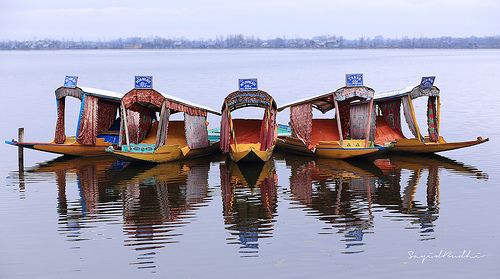
There are lots of small family-based ‘factories’ operating from housefronts, both on land and on the lake. Dalgate has some worthwhile papier mache factories. For wellery, curios and Tibetan/Nepali handicrafts, look in on Tibetan Gift House, at the junction of Dalgate and Boulevard.
The Boulevard itself is one big hassle of carpet sellers, gem dealers, fur houses and handicraft shops—to be avoided at all costs.
A lot has been written about Kashmiri carpets, the item that tourists instinctively make a beeline for in Srinagar. Cynics claim that the industry has been ruined by mass-purchase business mughals flooding the European and American markets with Kashmiri carpets, so that they cost more to buy here than abroad. This is a fable. What has happened is that the Kashmiris, like the Rajasthanis, have recently become only too aware of the true market value of their goods and prices have risen to about half curre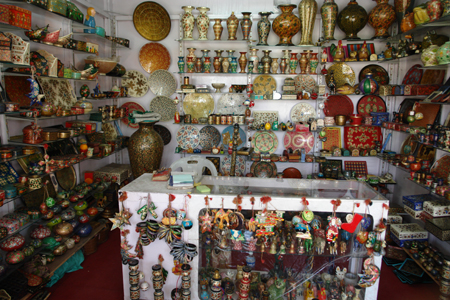 nt London prices.
nt London prices.
Most Kashmiri carpets employ old Persian designs, and are made by true descendants of the old Persian families. The composition of silk carpets is usually 80% silk to give them durability and sheen) and 20% wool. The wool is from Rajasthan and he silk from Mysore or China (Kashmiri silk, being so expensive, is now used only or saris). The dyes are generally chemical, imported from Germany. The feature of the Kashmiri ‘magic’ carpet is its special weave which produces two entirely different shades: viewed from one side, light; from the other side, dark. This effect is produced by cutting each knot downwards when filling it between each pair of threads, resulting in a dark intermediary pattern running through the primarily light weave.
Kashmiri carpets are still the best handmade carpets in the world. They are usually produced on large wooden looms by teams of young boys, and, depending on size and quality, take anything from 6 months to 4 years to make. Because they are so popular, a lot of inferior stuff is regularly produced, simply to meet the demand. You need to be very careful when buying carpets. Regardless of what the salesman tells you, check first the content of the carpet: the only real way of telling if it’s silk, or just a poor ‘staple’ (cotton derivative) substitute, is to take out a knot and burn it—cotton has a relatively slow burn, but real silk goes off like a quick fuse, leaving a small ‘knob’ on the en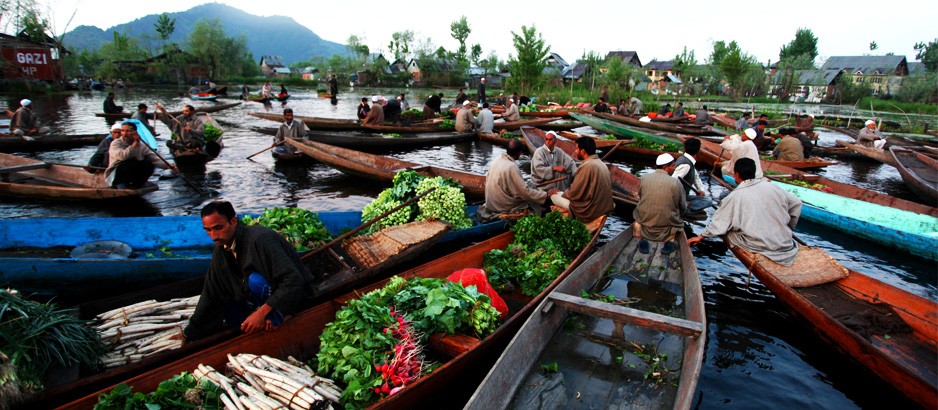 d of the thread. Second, count the number of knots in a sample inch of carpet. A good silk carpet should have a minimum of 324 knots per sq in. Really good ones go up to 900 knots, but most people can’t afford them.
d of the thread. Second, count the number of knots in a sample inch of carpet. A good silk carpet should have a minimum of 324 knots per sq in. Really good ones go up to 900 knots, but most people can’t afford them.
Anything less than 299 knots is probably not worth buying. Third, check the colour and pattern of the carpet—both should be in perfect symmetry. Finally, make sure the vendor has an export licence and can supply you with a certificate of origin (this saves you heavy VAT/customs payments). It’s also a good idea to photograph or mark any carpet being shipped home for you. This reduces the risk of being sent a completely different, inferior carpet to the one purchased.

